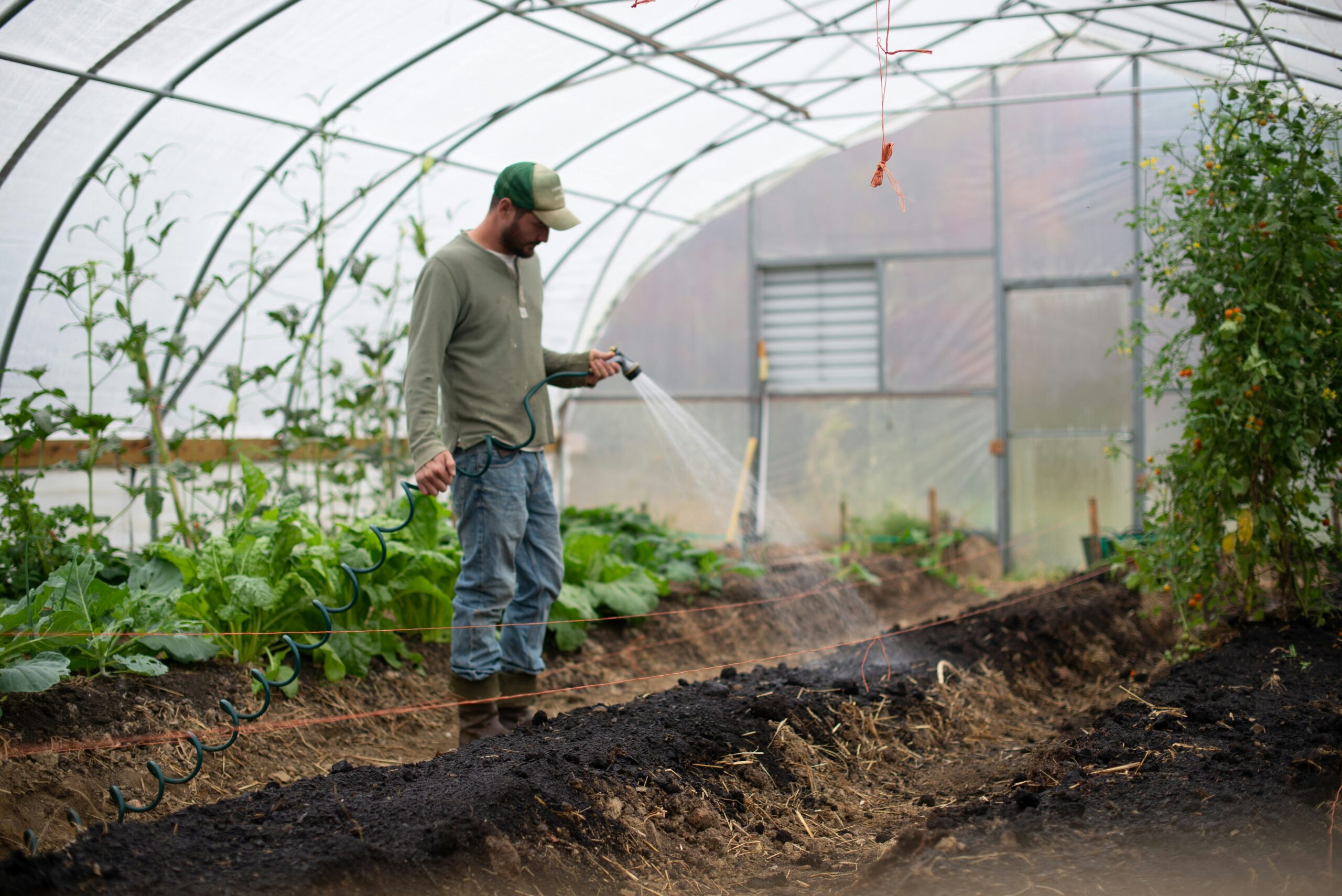Watering is one of the most fundamental aspects of plant care. Proper watering practices can mean the difference between thriving plants and struggling ones. However, the specifics of watering can vary widely based on the type of plant, its environment, and the season. This comprehensive guide will delve into all aspects of watering plants, from understanding plant water needs to advanced irrigation systems and troubleshooting common problems.
Understanding Plant Water Needs
Each plant has unique water requirements influenced by various factors including species, growth stage, environment, and soil type. Understanding these needs is crucial for effective watering.
- Plant Species and Water Needs:
- Succulents and Cacti: These plants are adapted to arid environments and store water in their leaves and stems. They require infrequent watering, allowing the soil to dry out completely between waterings.
- Tropical Plants: Typically need more consistent moisture. They thrive in humid conditions and benefit from regular watering.
- Annuals vs. Perennials: Annuals often need more water as they grow rapidly, while perennials have established root systems that can access deeper water sources.
- Growth Stage:
- Seedlings: Require consistent moisture to establish roots but should not be waterlogged.
- Mature Plants: Generally have more established root systems and can tolerate longer periods between watering.
- Environmental Factors:
- Climate: Plants in hot, dry climates need more frequent watering compared to those in cooler, humid climates.
- Season: Water needs fluctuate with the seasons. Plants typically need more water during their active growing seasons (spring and summer) and less during dormancy (fall and winter).
- Soil Type:
- Sandy Soil: Drains quickly and may require more frequent watering.
- Clay Soil: Retains water but can lead to poor drainage and root rot if overwatered.
- Loamy Soil: Ideal for most plants as it retains moisture while allowing excess water to drain.
Types of Watering Methods
Choosing the right watering method depends on the type of plant, its environment, and your specific circumstances.
- Hand Watering:
- Pros: Allows precise control over the amount of water each plant receives. Ideal for small gardens or indoor plants.
- Cons: Time-consuming for large areas. Can lead to uneven watering if not done carefully.
- Drip Irrigation:
- Pros: Efficient and reduces water wastage by delivering water directly to the plant roots. Ideal for gardens and landscapes.
- Cons: Can be expensive to install and requires maintenance to prevent clogging.
- Soaker Hoses:
- Pros: Provides slow, steady watering directly to the soil. Easy to install and ideal for vegetable gardens and flower beds.
- Cons: Can be less efficient than drip irrigation and may require frequent adjustments.
- Sprinkler Systems:
- Pros: Covers large areas efficiently. Suitable for lawns and large gardens.
- Cons: Can lead to water wastage due to evaporation and runoff. Not ideal for all plant types.
- Self-Watering Systems:
- Pros: Ideal for indoor plants and container gardens. Provides consistent moisture without the risk of overwatering.
- Cons: Initial setup can be costly. May not be suitable for all plant types.
When to Water Plants
Timing your watering correctly is essential to ensure plants receive the moisture they need without wasting water.
- Morning vs. Evening:
- Morning: Watering in the early morning allows plants to absorb moisture before the heat of the day. It also reduces evaporation and minimizes the risk of fungal diseases.
- Evening: Watering in the evening can be effective, but it may leave plants wet overnight, increasing the risk of fungal diseases.
- Seasonal Considerations:
- Spring and Summer: Plants generally need more water due to higher temperatures and active growth.
- Fall and Winter: Reduce watering frequency as plants enter dormancy and temperatures drop.
- Signs That Plants Need Water:
- Wilting: A clear sign that a plant needs water, but be careful as overwatering can also cause wilting.
- Dry Soil: Check the top inch of soil; if it feels dry, it’s time to water.
- Leaf Color and Texture: Yellowing leaves or crispy edges can indicate a lack of water.
How to Water Different Types of Plants
Understanding the specific watering needs of different plant types can help you develop a more effective watering routine.
- Houseplants:
- General Tips: Most houseplants prefer to dry out slightly between waterings. Use room temperature water to avoid shocking the roots.
- Succulents: Water sparingly, allowing the soil to dry out completely between waterings.
- Ferns and Tropical Plants: Keep the soil consistently moist but not waterlogged. Mist regularly to maintain humidity.
- Vegetable Gardens:
- General Tips: Vegetable gardens need consistent moisture, especially during flowering and fruiting stages. Mulching can help retain soil moisture.
- Tomatoes and Peppers: Water deeply and consistently to prevent blossom end rot and other issues.
- Leafy Greens: Require more frequent watering due to shallow root systems.
- Flower Beds:
- General Tips: Water deeply and infrequently to encourage deep root growth. Avoid overhead watering to reduce the risk of fungal diseases.
- Annuals: Typically need more water due to rapid growth.
- Perennials: Established perennials are more drought-tolerant and require less frequent watering.
- Lawns:
- General Tips: Water deeply and less frequently to encourage deep root growth. Early morning is the best time to water lawns.
- Cool-Season Grasses: Need more frequent watering during summer heat.
- Warm-Season Grasses: More drought-tolerant and require less frequent watering.
Tools and Equipment for Watering
Using the right tools can make watering more efficient and effective.
- Watering Cans:
- Types: Plastic, metal, and ceramic watering cans. Choose one with a comfortable handle and a spout suited to your needs.
- Usage: Ideal for houseplants and small garden areas. Provides precise control over water distribution.
- Hoses and Nozzles:
- Types: Standard hoses, soaker hoses, and expandable hoses. Nozzles can vary from spray patterns to adjustable flow.
- Usage: Suitable for larger garden areas. Choose a hose and nozzle combination that fits your watering needs.
- Irrigation Systems:
- Types: Drip irrigation, sprinkler systems, and soaker hoses.
- Usage: Ideal for large gardens, lawns, and landscapes. Efficiently delivers water to plants with minimal wastage.
- Moisture Meters:
- Types: Digital and analog moisture meters.
- Usage: Helps accurately measure soil moisture levels, preventing overwatering or underwatering.
- Timers and Controllers:
- Types: Mechanical, digital, and smart controllers.
- Usage: Automate watering schedules, ensuring plants receive consistent moisture without manual intervention.
Advanced Watering Techniques
For experienced gardeners, advanced watering techniques can optimize plant health and water usage.
- Deep Watering:
- Method: Water deeply and infrequently to encourage deep root growth. Use a soaker hose or drip irrigation system to deliver water directly to the root zone.
- Benefits: Promotes strong root systems and improves drought tolerance.
- Capillary Action:
- Method: Utilize capillary mats or wicking systems to provide consistent moisture from the bottom up.
- Benefits: Reduces the risk of overwatering and provides a steady supply of moisture.
- Hydroponics:
- Method: Grow plants in a soil-less medium using nutrient-rich water. Various systems include nutrient film technique (NFT), deep water culture (DWC), and aeroponics.
- Benefits: Allows precise control over water and nutrient delivery, often resulting in faster growth and higher yields.
- Self-Watering Containers:
- Method: Use containers with built-in reservoirs that provide consistent moisture to plants.
- Benefits: Reduces the frequency of watering and helps maintain consistent soil moisture levels.
- Mulching:
- Method: Apply a layer of organic or inorganic material on the soil surface to retain moisture and suppress weeds.
- Benefits: Reduces water evaporation, regulates soil temperature, and improves soil structure.
Water Quality and Its Impact
The quality of water used for plants can significantly affect their health. Understanding water quality issues and how to address them is essential for optimal plant growth.
- Tap Water:
- Chlorine and Chloramine: Commonly used in municipal water systems to disinfect water. Can be harmful to plants over time.
- Hard Water: Contains high levels of calcium and magnesium, which can lead to mineral buildup in the soil.
- Filtered Water:
- Types of Filters: Activated carbon filters, reverse osmosis systems, and deionizers.
- Benefits: Removes chlorine, chloramine, and other impurities, providing cleaner water for plants.
- Rainwater Harvesting:
- Method: Collect rainwater using barrels or cisterns. Rainwater is naturally soft and free of chemicals.
- Benefits: Environmentally friendly and beneficial for most plants.
- Distilled Water:
- Method: Use distilled water for sensitive plants that require pure water free from minerals and chemicals.
- Benefits: Ideal for carnivorous plants, orchids, and other plants sensitive to water quality.
- Water pH:
- Importance: The pH level of water affects nutrient availability in the soil. Most plants prefer a slightly acidic to neutral pH (6.0-7.0).
- Testing and Adjusting: Use pH testing kits to monitor water pH. Adjust with pH up or pH down solutions as needed.
Common Watering Mistakes and How to Avoid Them
Even experienced gardeners can make mistakes when it comes to watering. Here are some common pitfalls and how to avoid them.
- Overwatering:
- Symptoms: Yellowing leaves, wilting, root rot, and moldy soil.
- Prevention: Allow the top inch of soil to dry out between waterings. Use well-draining soil and pots with drainage holes.
- Underwatering:
- Symptoms: Wilting, dry and crispy leaves, slow growth.
- Prevention: Check soil moisture regularly and water when the top inch is dry. Adjust watering frequency based on plant needs and environmental conditions.
- Watering at the Wrong Time:
- Symptoms: Increased risk of fungal diseases, poor water absorption.
- Prevention: Water in the early morning or late afternoon to reduce evaporation and allow plants to absorb moisture before the heat of the day.
- Inconsistent Watering:
- Symptoms: Stress, irregular growth, and reduced yields.
- Prevention: Establish a regular watering schedule and adjust as needed based on weather and plant growth.
- Using Poor Quality Water:
- Symptoms: Mineral buildup, leaf burn, reduced growth.
- Prevention: Use filtered, rain, or distilled water if tap water quality is poor. Test and adjust water pH as needed.
- Ignoring Plant-Specific Needs:
- Symptoms: Poor growth, disease susceptibility, and plant stress.
- Prevention: Research and understand the specific watering needs of each plant species in your care.
Creating a Watering Schedule
A consistent watering schedule tailored to your plants’ needs can simplify plant care and promote healthier growth.
- Assess Plant Needs:
- Research: Understand the specific water requirements of each plant type.
- Observation: Monitor plant health and soil moisture regularly.
- Group Plants by Water Needs:
- High Water Needs: Group moisture-loving plants together for easier care.
- Low Water Needs: Keep succulents and cacti separate to avoid overwatering.
- Seasonal Adjustments:
- Spring and Summer: Increase watering frequency and duration during the active growing season.
- Fall and Winter: Reduce watering as plants enter dormancy and evaporation rates decrease.
- Use Tools and Technology:
- Moisture Meters: Use moisture meters to accurately measure soil moisture levels.
- Smart Irrigation Systems: Invest in smart irrigation systems that can automate and adjust watering schedules based on weather conditions.
- Regular Reviews and Adjustments:
- Monitor: Regularly check plant health and soil moisture.
- Adjust: Modify the watering schedule as needed based on plant growth, weather changes, and seasonal variations.
Special Considerations for Different Environments
Different growing environments require tailored watering approaches to ensure plants receive optimal care.
- Indoor Plants:
- Light: Indoor plants may require less frequent watering due to lower light levels and slower growth.
- Humidity: Maintain adequate humidity levels to reduce water loss through leaves.
- Containers: Use pots with drainage holes and well-draining soil to prevent overwatering.
- Outdoor Gardens:
- Climate: Adjust watering frequency based on local climate conditions. Hot, dry climates may require more frequent watering.
- Mulching: Use mulch to retain soil moisture and reduce evaporation.
- Rainfall: Monitor rainfall and adjust watering schedules accordingly to avoid overwatering.
- Greenhouses:
- Controlled Environment: Greenhouses allow for precise control over temperature and humidity, reducing water stress on plants.
- Irrigation Systems: Use automated irrigation systems to provide consistent moisture levels.
- Ventilation: Ensure proper ventilation to prevent excess humidity and fungal diseases.
- Container Gardens:
- Soil Volume: Containers have limited soil volume, requiring more frequent watering than in-ground plants.
- Drainage: Ensure containers have drainage holes and use well-draining soil mixes.
- Placement: Position containers to receive adequate light and protection from extreme weather conditions.
Watering and Soil Health
The relationship between watering practices and soil health is critical for maintaining a thriving garden.
- Soil Structure and Drainage:
- Importance: Healthy soil structure promotes proper drainage and root growth.
- Improvement: Incorporate organic matter like compost to improve soil structure and water retention.
- Soil Compaction:
- Impact: Compacted soil restricts water movement and root growth.
- Solution: Regularly aerate soil to reduce compaction and improve water infiltration.
- Soil pH and Nutrient Availability:
- Role of Water: Water quality and pH can affect soil pH and nutrient availability.
- Monitoring: Test soil pH regularly and adjust water pH if necessary to maintain optimal conditions.
- Mulching:
- Benefits: Mulching helps retain soil moisture, suppress weeds, and improve soil structure.
- Application: Apply a 2-3 inch layer of organic mulch around plants, avoiding direct contact with stems.
Troubleshooting Watering Problems
Even with the best practices, watering issues can arise. Here’s how to troubleshoot common problems:
- Yellowing Leaves:
- Cause: Can result from overwatering, underwatering, nutrient deficiencies, or poor drainage.
- Solution: Check soil moisture, adjust watering practices, and ensure proper drainage.
- Wilting:
- Cause: Wilting can occur due to both underwatering and overwatering.
- Solution: Assess soil moisture and adjust watering frequency. Check for root rot in overwatered plants.
- Leaf Drop:
- Cause: Often a result of sudden environmental changes, underwatering, or overwatering.
- Solution: Maintain consistent watering practices and avoid sudden changes in light or temperature.
- Root Rot:
- Cause: Overwatering and poor drainage lead to root rot.
- Solution: Improve soil drainage, reduce watering frequency, and remove affected roots.
- Slow Growth:
- Cause: Can be due to inadequate watering, poor soil health, or nutrient deficiencies.
- Solution: Ensure proper watering practices, improve soil health, and provide balanced fertilization.
- Fungal Diseases:
- Cause: Overwatering and high humidity can lead to fungal diseases.
- Solution: Reduce humidity, improve air circulation, and avoid overhead watering.
Sustainable Watering Practices
Adopting sustainable watering practices can conserve water and promote environmental health.
- Water Conservation:
- Rainwater Harvesting: Collect and use rainwater for watering plants.
- Drip Irrigation: Use efficient irrigation systems like drip irrigation to minimize water waste.
- Mulching: Reduce evaporation and retain soil moisture with mulch.
- Native and Drought-Tolerant Plants:
- Selection: Choose plants adapted to local climate conditions and lower water needs.
- Benefits: Reduces watering requirements and supports local ecosystems.
- Greywater Recycling:
- Method: Use recycled greywater from household activities for non-edible plants.
- Considerations: Ensure greywater is free from harmful chemicals and contaminants.
- Soil Health:
- Organic Matter: Incorporate organic matter to improve soil structure and water retention.
- Composting: Use compost to enrich soil and reduce the need for chemical fertilizers.
Conclusion
Watering plants effectively requires understanding their specific needs, environmental conditions, and the appropriate techniques and tools. By adopting proper watering practices, you can ensure your plants remain healthy and vibrant throughout the year.
Whether you are caring for houseplants, vegetable gardens, or flower beds, the comprehensive knowledge provided in this guide will help you master the art of watering plants.



